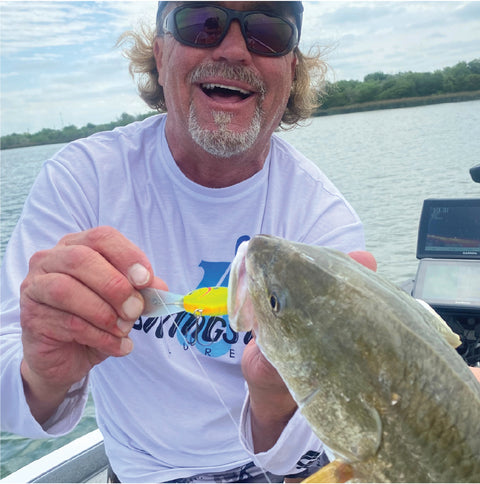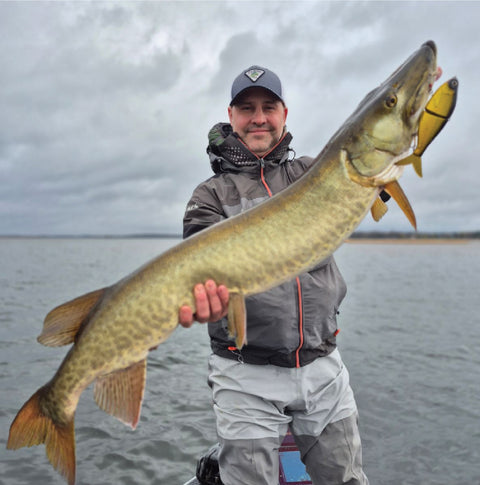Springtime Topwater Tactics for Bass Fishing: Expert Tips from Laker Howell
Spring is an electrifying time for bass anglers, with fish flooding shallow waters, making it the ideal season to refine topwater fishing techniques. As a professional angler with years of competitive experience, I’ve honed my approach to early spring bass fishing. In this guide, I share my go-to baits, setups, target areas, and tips for landing more bass.

The Power of the Livingston Lures Plopmaster
One of my favorite topwater bass lures is the Plopmaster from Livingston Lures. This treble-hooked buzzbait is less weedless than some, but its aggressive action excels when bass are coming off beds or when brim begin bedding. Its versatility shines across diverse waters, from grassy lakes like Guntersville to rocky ones like Lake of the Ozarks. My personal best—a 9-pound, 13-ounce bass—came on tail prop lure over a brim bed, showcasing its big-fish potential.
The Plopmaster’s allure lies in its noise and action. By tweaking the tail to adjust the cadence, combined with Livingston’s EBS technology, it triggers explosive strikes from big bass. It’s a staple in events like the Big Bass Tour at Guntersville, where it consistently produces hefty checks. Whether I’m working Texas buck brush, docks, or overhanging bushes, the Plopmaster’s drawing power makes it a mainstay on my deck.
My Go-To Setup for Topwater Bass Fishing
To maximize hook sets and control big bass, I use a specific setup for the Plopmaster. My choice of an 8:1 gear ratio reel may surprise some, but it’s essential for keeping up with aggressive bass that hit and run. The high-speed reel demands disciplined hand control to avoid moving the bait too fast, but the payoff is worth it. I pair it with 55-pound straight braid and a 7’3” medium-heavy rod. The rod’s bend prevents pulling treble hooks out of a fish’s mouth, while its backbone handles grass beds. Braid ensures the bait performs flawlessly—fluorocarbon sinks, and monofilament stretches too much, risking lost fish. This combination eliminates stretch issues and secures more hookups.
Rod angle and line positioning are critical, especially around cover. Braid’s floating nature allows me to guide the bait under tree edges or around docks by watching the line, ensuring it hits the strike zone. In open water, I point the rod at the bait for the fastest reaction and best hook set. For rare floating grass patches, I hold the line up to avoid snags, a tactic braid enhances.
Pro Tip: Practice slow reeling with a high-speed reel to maintain control and keep the Plopmaster in the strike zone.
Targeting Grass Beds and Brim Beds in Spring
Bass use grass patches year-round, but in spring, these areas become critical staging points as fish move into shallow waters to spawn or return offshore. A grass patch at the start of a point leading to a spawning pocket is a prime target, where bass pause to feed on brim or shad. I work the Plopmaster over both edges and the center of submerged grass or along the edges of emergent grass, slowing it down to let the tail provoke strikes.
Brim beds are another hotspot for spring bass fishing. Whether on a grass-heavy lake or a rocky one, finding brim beds and working them with the Plopmaster can yield trophy bass. The bait’s noise and action mimic the activity bass key in on, making it highly effective.
Learn More: How to Find Brim Beds for Bass Fishing
Pairing Baits for Tournament Success
For anglers fishing local tournaments with a co-angler, pairing baits can boost success. While I throw the Plopmaster, I recommend the co-angler use a subsurface bait like the Pro-Ripper, a silent trap-style bait in a brim color. This half-ounce, treble-hooked bait lacks rattles but features EBS technology, making it ideal for spring when bass often avoid loud presentations. Around grass beds, the Plopmaster stirs up fish, while the Pro-Ripper follows to pick off less aggressive ones. I equip it with number four hooks—red in front, copper in back—for optimal performance.
Tournament Tip: Coordinate with your co-angler to cover topwater and subsurface presentations for a balanced approach.
How to Land More Topwater Bass
Topwater strikes are thrilling, but losing fish is a common challenge. Landing more bass requires refined technique and practice. For beginners or anglers prepping for a tournament, I recommend a medium rod over a medium-heavy to avoid jerking the bait away from the fish. As confidence grows, switch to a medium-heavy for better control.
When a bass strikes, it often jumps, risking hook dislodgement with treble hooks. Keep the rod low to maintain the hook’s position. A poorly set hook can slip if the fish changes direction, so keep the bass moving in one direction to stun it slightly, improving landing odds. Near the boat, drag the fish across the surface, then spin it once to grab it (if not using a net, as required in Bassmaster events). This method, honed over years, boosts my success with topwater giants.
Quick Tips for Landing Bass:
-
Use a medium rod for beginners to reduce jerking.
-
Keep the rod low to prevent jumps.
-
Maintain consistent fish direction to secure hooks.
-
Drag and spin fish at the boat for hand-landing.
Final Thoughts on Spring Bass Fishing
Spring topwater bass fishing demands precision, from selecting the right bait and setup to targeting grass and brim beds. The Plopmaster, paired with a high-speed reel, braid, and medium-heavy rod, forms the cornerstone of my approach. Pairing it with subsurface baits like the Pro-Ripper and mastering landing techniques can transform your results. Whether you’re fishing a local tournament or chasing a personal best, these bass fishing tips will help you capitalize on the explosive action of spring.
Laker Howell









